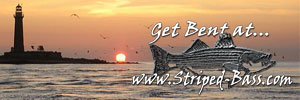|
Without a doubt the high or low slack is a big determinant of where you will fish. Because the the high and low slack are tied unerringly to the direction the current will flow when it starts again. They are also tied to what spots will have the best footing too and how that fishability of a spot will improve or get worse when the current starts again.
Do not confuse low and high slack with low and high tide but do know that some spots will be perfect fish after say low slack when the current is moving and the spots to stand are exposed at low tide. Same on the other side of high slack when you can fish areas at high tide that may have too much shore between you and enough water to fish at other times.
Its a real advantage to understand what happens before and after the current related slacks and the tide related water levels. Sometimes its a huge blessing that the high and low tides do not coincide with high and low slack.
Yes its a complicated place and its hard to figure it out but taking the time to do so will pay off big dividends.
|


